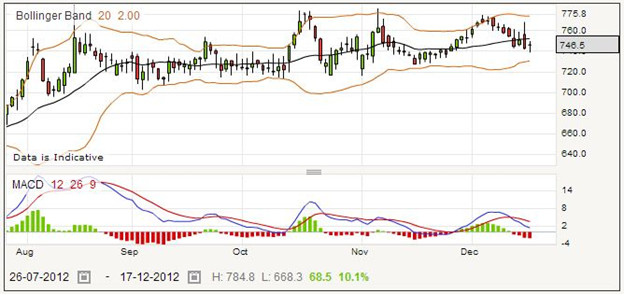Hikma Pharmaceuticals is a large multinational pharmaceutical company based in London. You can see from the daily price chart below that it has reasonable volatility, making it suitable for spread betting, and despite a dip in price in 2011 is on a reasonable growth path.

The company was originally founded in Jordan in 1978, and the founder, Samih Darwazah, still serves as Chairman. It was the first Arab company to export pharmaceutical products to the USA, in 1996, and it was first listed on the London Stock Exchange in 2005. It has production facilities around the world, including in the USA, in Europe, and the Middle East.
It has expanded its business with many acquisitions, including in Italy, Saudi Arabia, Jordan, Egypt, and Germany. The pharmaceutical industry tends to be up and down in value, because in many ways it is dependent on discoveries and governmental approvals for its business. Hikma manufactures branded and nonbranded generic and licensed-in products, but depends on the rest of the industry for these products, and has to meet strict standards, for example of the Food & Drug Administration (FDA) for USA drugs.
Looking at the price chart above, you can see that the Bollinger Bands have narrowed significantly twice in recent months. As is usual, in each case the narrowing is followed by a widening and a strong price trend. In this case both trends are upwards to the boundary of the Bollinger Band, though you are as likely to see breakouts downwards following this formation.
The price has varied from below 300 in 2008 to above 900 in 2011, with a marked dip to just above 500 in the second half of 2011. However the price appears to be on a stable uptrend since that time. Whenever you are trading, it is important to look at the price chart on various timescales to understand the overall picture of the company’s progress.
Hikma Pharmaceuticals Rolling Daily
With good volatility, you may decide to spread bet on Hikma Pharmaceuticals. If you decide that the price will be going down, you would place a sell bet, staking perhaps £9 per point. The current price for a daily rolling bet is 745.1 – 748.9.
For the sake of this example, assume first that you are correct and the price goes down to 694.8 – 698.6. Your bet was placed at the selling price of 745.1, and it closed at the buying price of 698.6. Therefore you have gained the difference in points, which is 745.1 minus 698.6, or 46.5 points. Your stake was £9 per point, so multiplying by 46.5 your total win is worth £418.50.
Now look at the case where you have a losing outcome. Perhaps after you placed your short bet the price went up to 780.31 – 784.11, and you decided that you needed to close your bet and cut your losses. The bet was placed at the selling price of 745.1, as before, and this time it closed at the buying price of 784.11. That means you lost 39.01 points. For your chosen size of wager, that amounts to a loss of £351.09.
Many spread betters decide to use stop loss orders to protect themselves from massive losses if they do not have time to keep a check of the markets. The stop loss order requires your spread betting provider to close your losing trade if it reaches a price that you dictate, and so it will protect you from losses getting out of hand. This time, a stop loss order might have closed your trade when the quote was 778.25 – 774.05. With an opening price of 745.1, the closing price would be 774.05, for a loss of 28.95 points. With a £9 stake, your losses would amount to £260.55.
Hikma Pharmaceuticals Quarterly Futures
For the futures based example of a spread bet, assume that you have a bullish view on the pharmaceutical industry and on Hikma in particular over the next few months. The current quote for the far quarter futures spread bet is 747.3 – 754.1. This time you decide to stake £6 per point on a long bet.
Demonstrating the successful bet first, suppose the futures quote goes up to 822.75 – 829.55. You can close your bet and collect your winnings. The bet closes at the selling price of 822.75, having been put on at the buying price of 754.1. That means that the bet has made 68.65 points. Multiplying this by £6, your original stake, your profit is £411.90.
Now for an example of a losing bet. Perhaps the quote might go down to 691.97 – 698.77, and you close your trade quickly to prevent any further loss. The spread bet would close at 691.97, down from a starting price of 754.1. That means you have lost 62.13 points. For your chosen size of wager, that amounts to a loss of £372.78.
If you get confused between when to use a selling price and when to use a buying price in your calculations, all you need to remember is that the price you use is the one that is worse for you, i.e. gives you the greatest loss or the least gain. This is the way that your spread betting provider is paid for his services, by gaining the amount of the spread on each bet.
If you do not have time to watch the markets all day long, you might use a stop loss order which is usually placed when you open the bet. With a stop loss order, in this case your losing trade might have closed when the quote was 712.09 – 718.89. 754.1 minus the closing price of 712.09 is 42.01 points. With a £6 stake, that works out to £252.06 lost.